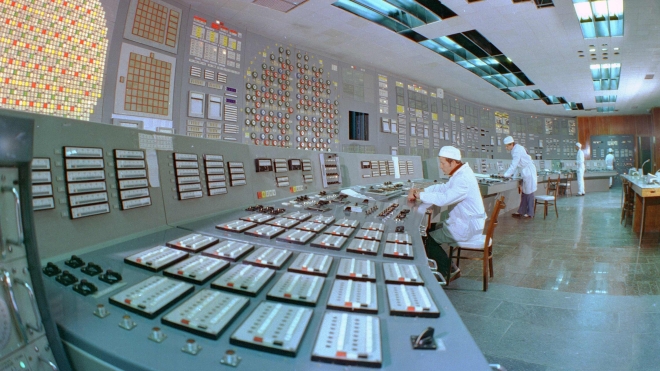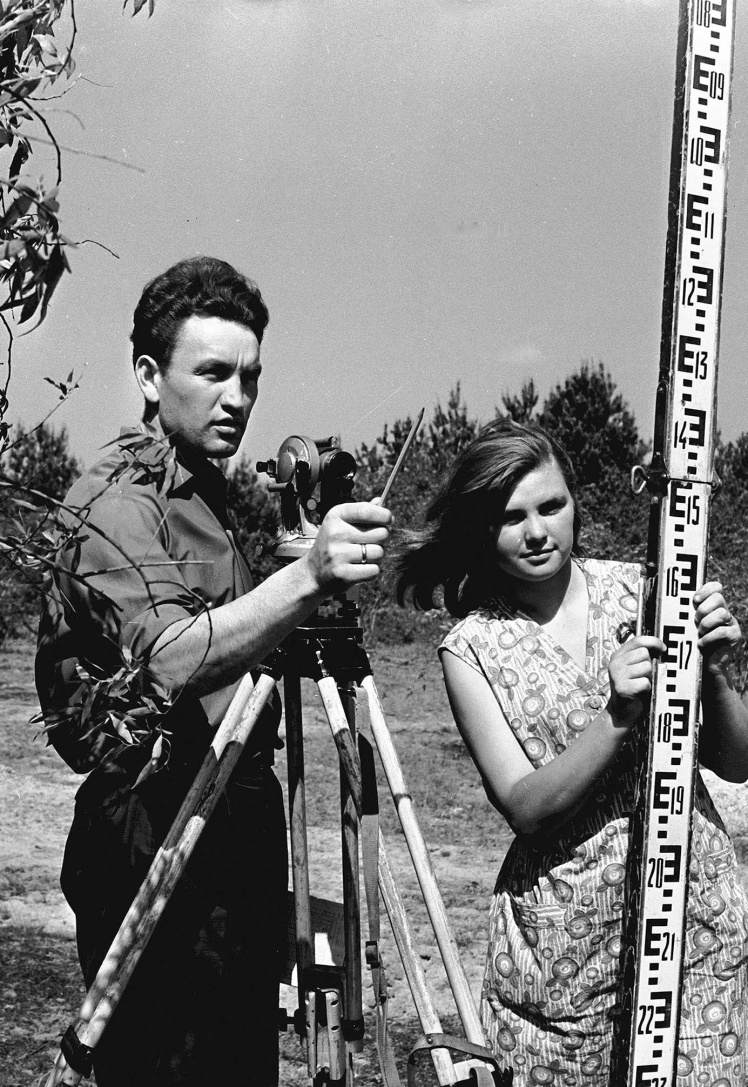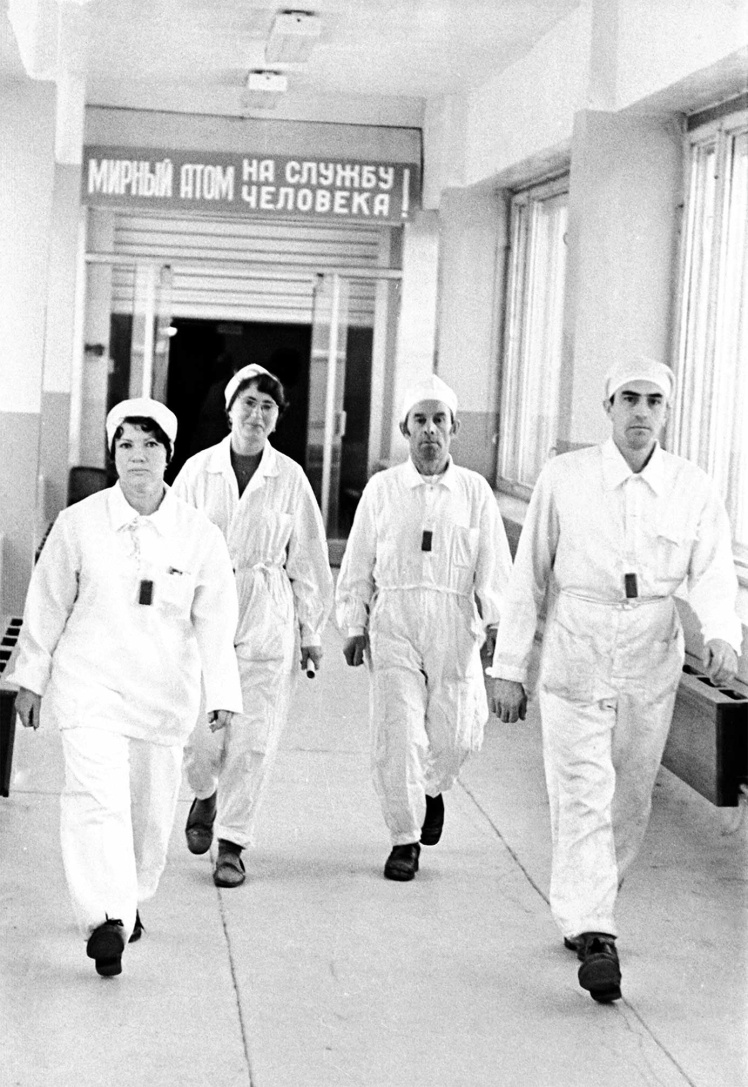Attempts to use a controlled nuclear reaction to produce electricity in the USSR began in the 1940s. In the fall of 1945, a group of physicists led by Igor Kurchatov presented a report to the countryʼs leadership on where, in addition to weapons, nuclear energy can be used: in nuclear power plants, transport, industry, and agriculture. To which the then head of the Soviet Union Stalin said at once: "First make the bomb, and then everything else!"
The first atomic bomb was successfully tested in the USSR in 1949. And a year later, Stalin personally signed the resolution of the Council of Ministers of the USSR "On research, design and experimental work on the use of atomic energy for peaceful purposes." In 1954, the first in the USSR and in the world, the Obninsk nuclear power plant (Kaluga region) became operational. In 1966, a resolution of the Council of Ministers of the USSR approved the plan for the construction and implementation of nuclear power plants throughout the country.
Soviet physicist Igor Kurchatov (center, with beard) with First Secretary of the Central Committee of the CPSU Nikita Khrushchev (left of Kurchatov) and Chairman of the Council of Ministers of the USSR Mykola Bulganin (right of Kurchatov) at the Atomic Energy Research Center in Harwell, Great Britain, April 26, 1956 year
Wikimedia
According to this resolution, the construction of a nuclear power plant was planned in the southern part of the United Energy System of the USSR, which was to provide electricity to the Central Energy District — the entire territory of the Ukrainian SSR and the Rostov region. After surveying 16 potentially suitable places in the Kyiv, Vinnytsia and Zhytomyr regions, they settled on two options — near the village of Ladyzhyn (Haysynsky district, Vinnytsia region, on the right bank of the South Buh), and near the village of Kopachi (Chornobylsky district, Kyiv region, on the right bank of the Pripyat River, 15 kilometers away from the city of Chornobyl). In 1967, the second option was approved, the station was named Chornobylska.
Surveyors Volodymyr Slobodenyuk and Lyubov Rodeniuk mark the main construction sites of the future Chornobyl NPP, May 25, 1971 Laying the first cubic meters of concrete in the foundation of the Chornobyl NPP, August 15, 1972
In 1970, the directorate of the Chornobyl NPP (or ChNPP) was created, and was headed by Viktor Bryukhanov. He headed the construction and operation of the station until the accident in April 1986.
In May 1970, the pit for the first power unit of the Chornobyl nuclear power plant was marked out. In August 1972, the first cubic meter of concrete was ceremoniously poured into the foundation of the main building of the first phase of the station, and a stainless capsule with a message to future generations was placed there.
In February 1970, three kilometers from the Chornobyl NPP, construction began on a workersʼ settlement — the future city of nuclear workers, Prypiat. According to the 1969 project, it was designed for 75-85 thousand people. Meanwhile, the staff and construction workers lived in dormitories or in the villages around the station that was being built.
"We lived in dormitories first together with construction workers, and then in a separate, stationary one. Families rented apartments within a radius of 20 kilometers from the station. All villages were inhabited by operators and builders. They lived together with their owners, and those who were lucky lived separately," recalled one of the construction participants and the future head of the ChNPP chemical department Yevhen Yashin.
Construction of residential buildings in the town of energy builders of the Chornobyl NPP, February 1971.
Initially, the launch of the first power unit of the Chornobyl NPP was planned for 1974. But already at the first stages of construction, this term was threatened with failure. The thing is that the general contractor — the "Kremenchukgesbud" trust — has never built nuclear power plants before. Already in April 1972, the Central Committee of the Communist Party of Ukraine (CC CPU) and the Council of Ministers of the Ukrainian SSR complained "that the ʼKremenchukgesbudʼ construction department of the Ministry of Energy and Electrification of the USSR is slowly developing the construction of the Chernobyl nuclear power plant. The work plan is not implemented. Construction and installation work is performed at a low engineering level, large losses of construction workersʼ working time are allowed, construction machinery is not used enough."
Installation of the canal structures of the Chornobyl NPP, April 12, 1975.
Then the Ministry of Energy of the USSR postponed the launch to 1975. But interruptions began with the supply of the necessary equipment. Because of this, the First Secretary of the CC CPU Volodymyr Shcherbytsky had to personally complain to the Chairman of the Council of Ministers of the USSR Oleksiy Kosygin. After that, supplies improved, and the start-up date of the first power unit was postponed for the second time — now to 1977.
One of the construction sites of the Chornobyl NPP, September 5, 1975.
No one was going to postpone the deadline for the third time. Therefore, the builders had to work at a breakneck pace, in some areas they worked around the clock. Finally, on September 26, 1977, at approximately 8:20 p.m., turbogenerator No. 2 of the first block was switched on. This is how the first nuclear power plant in Ukraine started operating.
"Preparation for the launch of the unit was very intense. Initially, it was planned to launch the first turbogenerator. But due to shortages, generator No. 2 had to be started first. There were not enough personnel, and I was transferred to a shift. Thus, on September 26, 1977, I was lucky enough to be at my workplace. I made a small deviation from the regulations and wrote in the operative log "Hooray! The second turbogenerator is synchronized. The machine is online!” recalled the head of the chemical shop shift Mykola Annenkov, who was 26 years old at that time.
The main board of the first unit of the Chornobyl NPP, October 26, 1977 Employees of the Chornobyl NPP before the start of the shift, December 21, 1978.
The Chornobyl NPP was designed in such a way that it could use three different types of reactors. In the end, they decided to put the newest graphite-water reactor HPCR-1000 at the station, which at that time had already been tested at several nuclear power plants of the Union.
Atomic reactor of Chornobyl NPP, October 1977.
At the end of 1978, the second power unit was launched at the Chornobyl NPP. And by April 1979, the station produced the first ten billion kWph of electricity. The third power unit was launched in 1981, and the fourth in 1983. In August 1984, 100 billion kWph of electricity was produced at the Chernobyl NPP. Two more power units were built in parallel. The start-up of the fifth power unit was planned for the end of 1986, and the sixth — for the end of 1988. As of 1986, nine thousand people worked at the Chornobyl NPP.
Installation of the fourth power unit of the Chornobyl NPP, 1982.
Employees of the Chornobyl NPP (from left to right): senior reactor control engineer Babichev, reactor shop shift chief Shavlov, station shift chief Barinov, turbine control senior engineer Koryukalov, and shield unit control senior engineer Kamyshinsky, August 21, 1984.
But there were no problems with the timing of the construction of the stationʼs satellite town. It was built even faster than the Chornobyl NPP itself, because about six thousand construction workers had to be housed and fed somewhere. Therefore, the first buildings of the city in 1971 were dormitories and dining halls. At other Soviet nuclear power plants, such satellite towns were usually rebuilt several months (or even years) before the start of construction of the nuclear plant itself. The first apartment buildings in Prypiat were built in 1972, at the same time the new settlement received the status of an urban-type village, and in 1979 — the status of a town.
Development of the city of Prypiat, Chornobylsky district, Kyiv region, 1977.
Prypiat was built primarily for the workers of the Chornobyl NPP. But very quickly the town became one of the main transport hubs of Polissia. The "Yaniv" railway station already existed nearby, and in the course of construction, the fairway of the Prypiat River was extended, and now there was a shipping lane with a length of almost 600 kilometers nearby. Several highways were also built around the town.
As of the beginning of 1986, Prypiat was a city with a developed infrastructure: 160 houses, 13 414 apartments, 15 kindergartens, 5 schools, one technical vocational school, 25 shops, 27 canteens, cafes and restaurants, a palace of culture, a cinema with 1 220 seats, 10 gyms, 3 swimming pools, 10 shooting ranges, 2 stadiums. 47 500 people lived in the city. The average age of residents was 26 years.
View of the main square of Prypiat, July 1980.
View of the city of Prypiat, August 1983.
The first serious accident at the Chornobyl NPP occurred on September 9, 1982. At Power Unit No. 1, several tubes containing nuclear fuel — uranium — collapsed during the start-up of the reactor after planned repairs. The emergency protection did not work for 20 minutes. One of the reactor channels ruptured, and a radioactive mixture of steam and gas was released into the atmosphere. This incident was kept quiet in the USSR. But the scale of the accident on April 26, 1986 — when the reactor of the fourth power unit exploded — could not be hidden, despite all the efforts of the Soviet leadership.
The destroyed fourth power unit of the Chornobyl NPP, October 4, 1986.
The first report about the accident at the Chornobyl NPP appeared only 36 hours later, when the USSR State Commission decided to evacuate the population of the town closest to the Chornobyl NPP — Prypiat — and the 30-kilometer zone around the plant. In total, more than 115 000 people left their homes. To reduce baggage and prevent panic, people were told they could return home in three days.
Despite the accident, the station resumed work at the end of 1986. It was finally closed only in December 2000. Most of the evacuees were resettled in the neighboring districts of the Kyiv region. A new town was built for the station workers — Slavutych. Prypiat gradually turned into a ghost town.
So that "Babel" does not turn into a ghost publication, support us by donating: 🔸 in hryvnia , 🔸 in cryptocurrency , 🔸 Patreon , 🔸 PayPal: [email protected].
One of the streets of Prypiat after the accident at the Chornobyl NPP, with the “Polissia” hotel in the background, 1987-1989.






